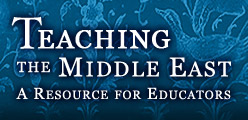Is the Literature of the Middle East Arab and/or Muslim?
Less than a third of Muslims worldwide are Arab, that is, people who speak a dialect of Arabic as their native language. Most are from Persianate, Turkic, Indic, Malay, African, or European linguistic galaxies.
Most Arabs are Muslim. At the same time Middle East Arab nations include old, diverse, and vibrant Christian and Jewish communities.
Profound ties link Islam as a religion to Arabic as a language and culture. The Qur’an calls itself an “Arabic revelation” and the vast majority of Muslims attempt to recite at least some of it in Arabic. Religious leaders and scholars are expected to know Arabic well, as well as Arabic grammar, poetry, history, and literary theory. The early expansion of Islam occurred under the umbrella of Arab conquest and rule. By the second century of Islam, the term “Arab” became part of a linguistic polarity with non-Arab (`Ajami, plural `Ajam), a term that originally designated native Persian-speakers but came to refer to non-Arabic speakers more generally.
Yet from the fourth century of Islam, `Ajami poets, philosophers, and storytellers in Persian, Punjabi, Urdu, Swahili, and Turkic (a linguistic family that includes languages such as Turkish, Azeri, and Uzbek) began to take prominent positions within the Middle Eastern literary universe. In recent years languages such as French, Berber, Kurdish, and other languages of Middle Eastern Muslims emerged with a stronger literary profile.
Not only has the conflation of Arabs and Muslims concealed the linguistic diversity within Islam, it also conceals the vital place of non-Muslims within Arabic literature.
Middle Eastern Christians, for example, composed theological and philosophical works in Arabic, translated the Bible into Arabic, and played a central role in the Arabic literary renaissance of the nineteenth and twentieth centuries. Until the second part of the twentieth century, most Middle Eastern Jews spoke Arabic as their native language. Saadia Gaon (d. 942 CE), Ibn Paquda (d. before 1050) and Maimonides (d. 1204) created a legacy composed in Judeo-Arabic (Arabic in Hebrew script) that remained influential for centuries, while poets such Shmuel (Samuel) Ha Nagid (d. 1056) mastered the Arabic poetic repertoire and composed major poetic works in Arabic and Hebrew, igniting the Golden Age of Hebrew Poetry.
Supporting Links:
Medieval Hebrew Poetry. Medievalhebrewpoetry.org. Link to resource![]() (accessed February 5, 2010).
(accessed February 5, 2010).
Scheindlin, Raymond P. “Samuel ha-Nagid: Golden Age poetry in tenth-century Spain.” Jewish Heritage Online Magazine. Link to resource![]() (accessed February 5, 2010)
(accessed February 5, 2010)

 Michael Sells
Michael Sells
John Henry Barrows Professor of Islamic History and Literature, Divinity School, The University of Chicago
Guiding Questions
1. “The Muslim World” and “the Arab World” are terms one sometimes hears and are often confused. What are some important ways in which these two realms overlap, contributing to this confusion?
2. What are some of the ways in which the above terms do not overlap, an awareness of which can provide a more nuanced view of the Middle East?
3. When would the “fourth century of Islam” be in Common Era terms?


 Print Page
Print Page
